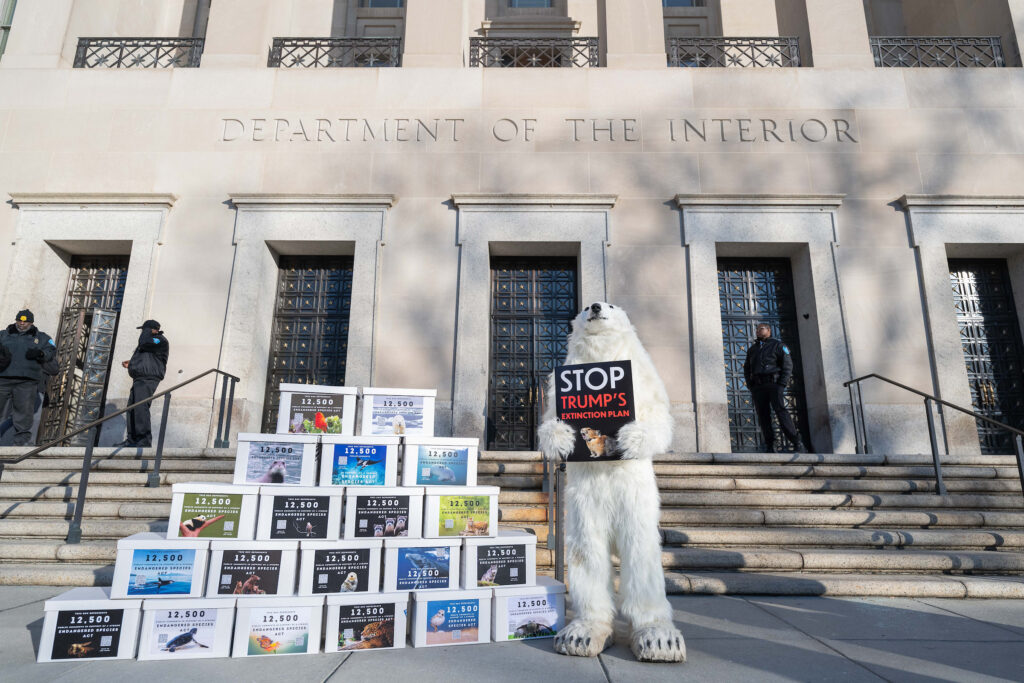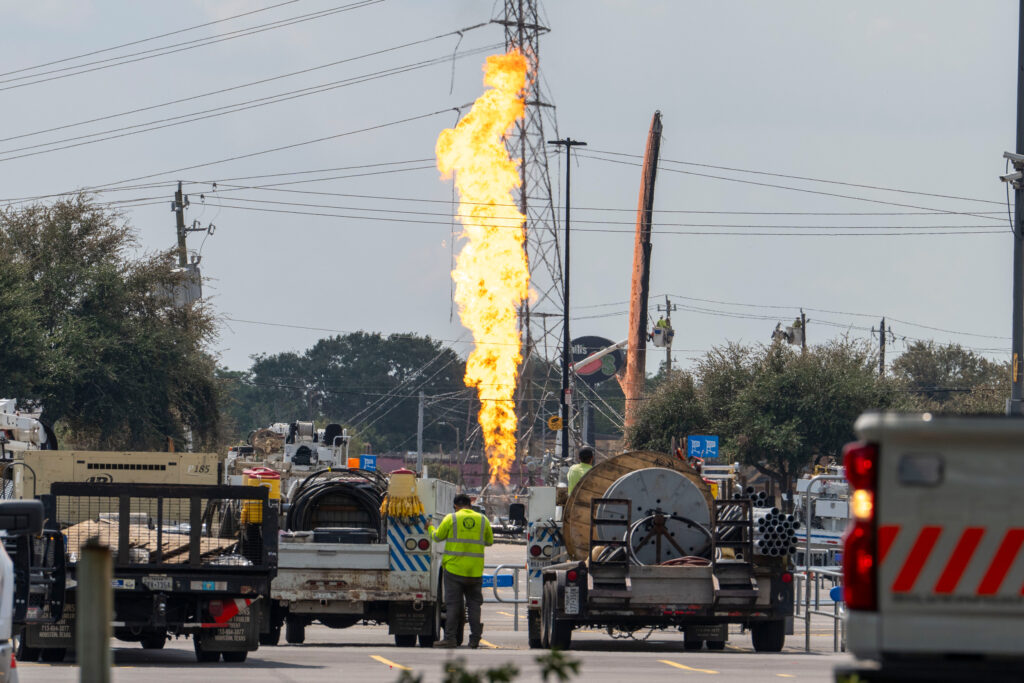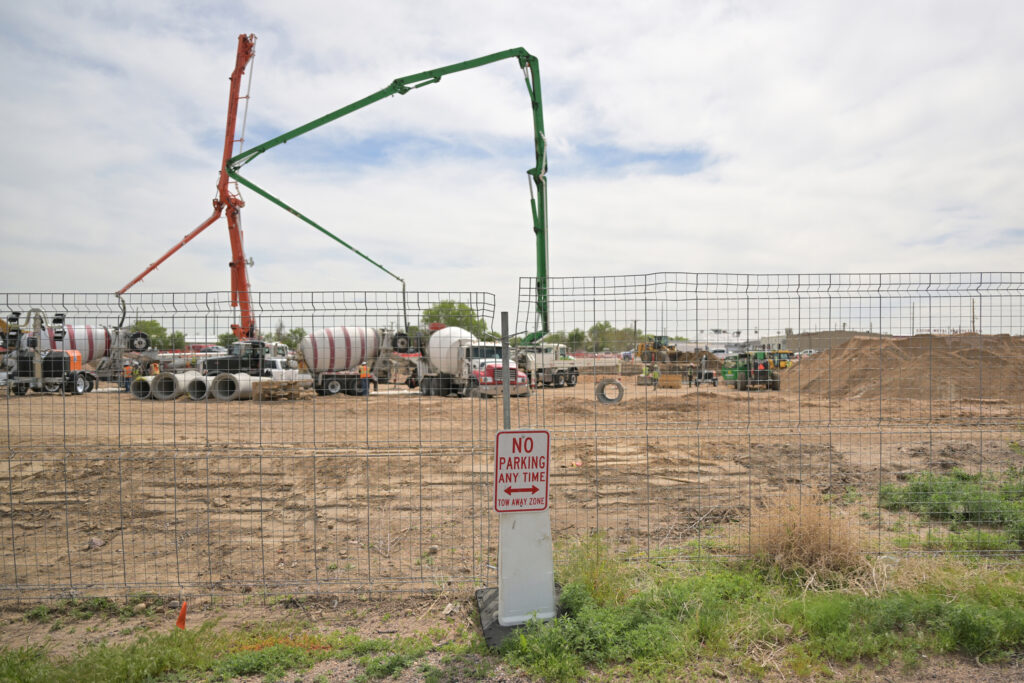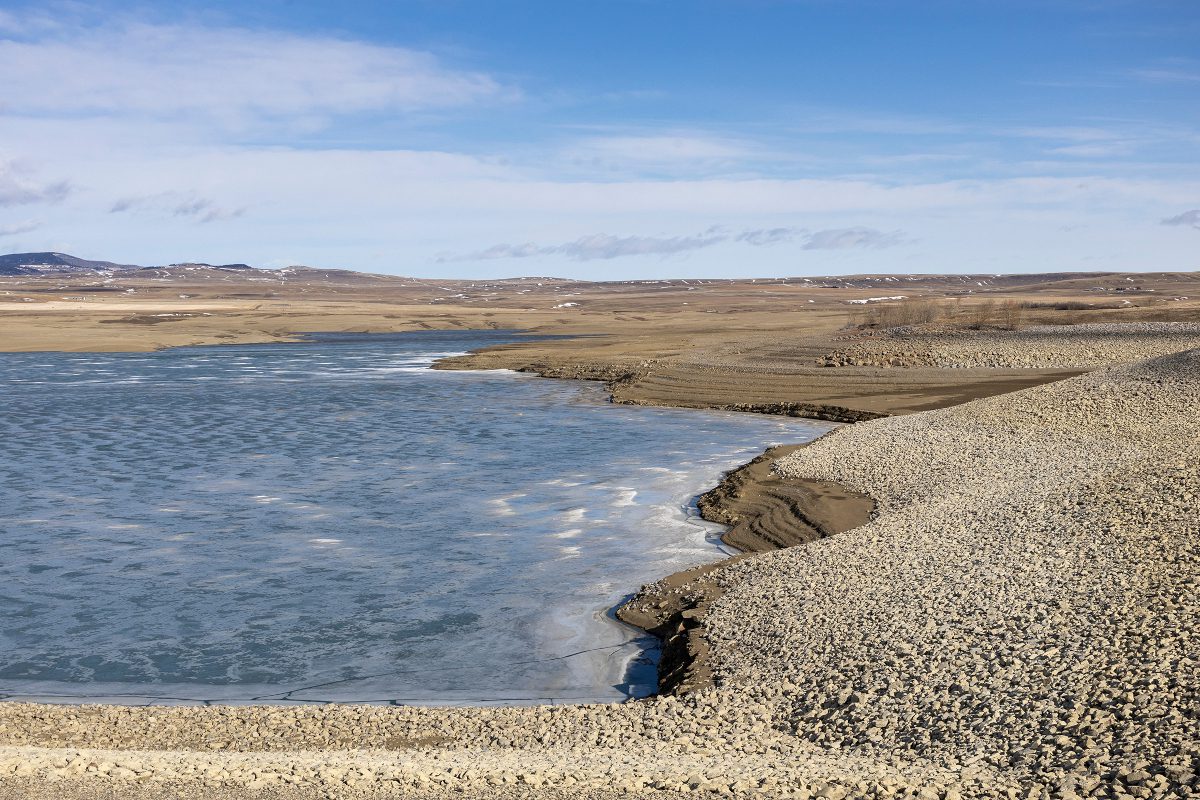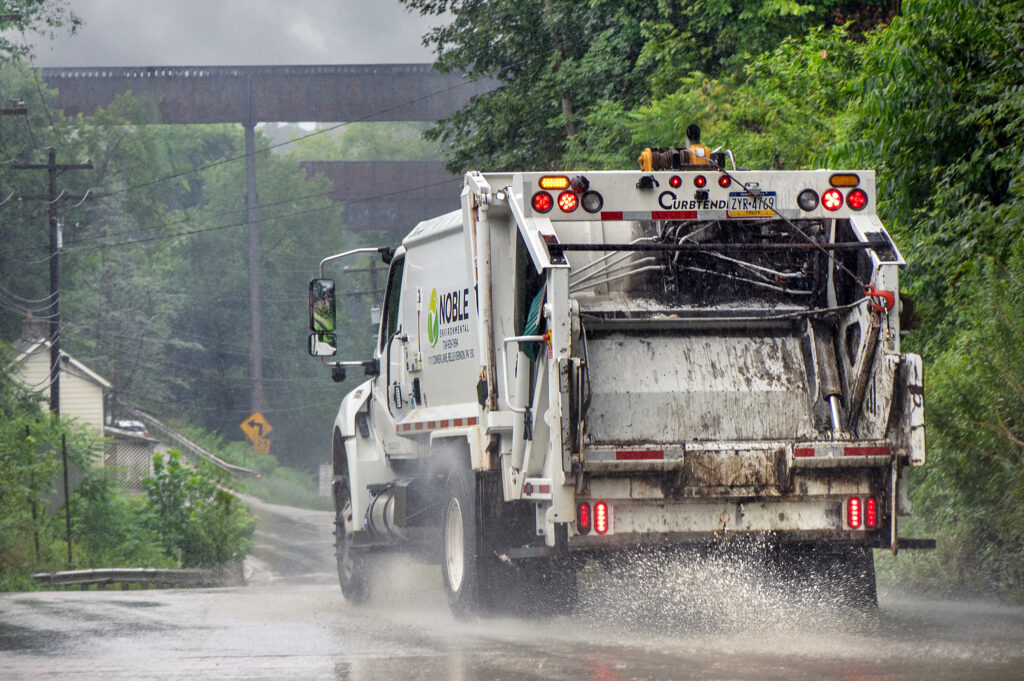CHIRICAHUA NATIONAL MONUMENT, Ariz.—It was a rare rainy day, with a brief sprinkle of snow in southeastern Arizona where the Rocky Mountains, Sierra Madre Occidental range, Sonoran and Chihuahuan deserts come together. Still, the cold didn’t stop roughly 20 locals from showing up Saturday morning to protest the Trump administration’s threats to the nation’s federal lands and park system as thousands have done in recent weeks, staging demonstrations from world-famous parks like the Grand Canyon to hidden gems such as Chiricahua.
Since taking office, the Trump administration has laid off more than 2,000 probationary employees at the Interior Department, which oversees the National Park Service, and implemented funding freezes that have stalled conservation efforts across public lands. In Cochise County, home to Chiricahua National Monument, that’s having real impacts, the protesters said, threatening the area’s economy as well as the landscape many locals cherish. But those protesting had a bigger concern: They worry the public lands that make up much of the West will be privatized, and monuments like Chiricahua dismantled and sold to the highest bidder.
Before the protest had even started, their concerns were vindicated. A Friday evening fact sheet put out by the White House featured a bullet point saying the administration would terminate “proclamations declaring nearly a million acres constitute new national monuments that lock up vast amounts of land from economic development and energy production.”
We’re hiring!
Please take a look at the new openings in our newsroom.
See jobs
By Saturday morning, that bullet point was gone, but The New York Times reported California’s Chuckwalla and Sáttítla Highlands National Monuments, which, after years of advocacy from local tribes, communities and businesses were the last national monuments designated by former President Joe Biden, had been eliminated via executive order, though no announcement of their elimination has been put out publicly.
The White House did not respond to a request for comment from Inside Climate News.
The lack of clarity has left local proponents uncertain over the future of the two new monuments. Both had garnered widespread support before they were designated as monuments in the national park system at the start of this year, before Biden left office. Chuckwalla protected 624,000 acres of public lands south of Joshua Tree National Park, from the Coachella Valley region in the west to near the Colorado River in the east. Sáttítla Highlands National Monument protected 224,000 acres of the Pit River Nation’s sacred ancestral homelands in the Shasta-Trinity, Klamath and Modoc National Forests in northern California near Mount Shasta.



“I’m shocked to learn that after decades of work to protect Sáttítla Highlands National Monument, the White House is attempting to alter it without talking to anyone in the community,” Casey Glaubman, Mount Shasta city councilmember and Mount Shasta Avalanche Center executive director, said in a statement. “This move jeopardizes the area’s exceptional outdoor recreational opportunities and crucially important reserves of fresh, clean water. Tribal nations, local elected officials, business leaders, and local sportsmen have all strongly supported the designation and were engaged in a years-long process to make it happen. Everyone in our community agrees that this landscape deserves permanent protection.”
This isn’t the first time Trump has targeted national monuments, though it appears his second administration is going farther than before. During his last term, Trump significantly shrunk Utah’s Bears Ears and Grand Staircase-Escalante national monuments, which had been created by the Obama and Clinton administrations, respectively. The Biden administration restored the monuments to their initial sizes, but Trump has said he will shrink those monuments again and is also targeting another national monument in the Colorado Plateau region of northern Arizona and southern Utah—Baaj Nwaavjo I’tah Kukveni-Ancestral Footprints of the Grand Canyon—that has drawn criticism for limiting access the uranium and other minerals that could be mined in the monument. It’s unclear whether Trump intends to shrink the Sáttítla Highlands and Chuckwalla monuments, or will try to eliminate them altogether.
Project 2025, the policy roadmap for a second Trump administration coordinated by the conservative Heritage Foundation, has even suggested repealing the Antiquities Act of 1906, the law that allows presidents to create national monuments that was signed by President Theodore Roosevelt, who later used it to protect the Grand Canyon as a national monument before it later became a park.


When the first Trump administration shrank Bears Ears and Grand Staircase-Escalante, a coalition of environmental groups and tribes swiftly filed lawsuits challenging the actions. Lawyers for Earthjustice, the group representing the coalition, previously told Inside Climate News the group would revive its case or bring others if monuments were targeted again. Environmental groups have also joined the chorus against the threats to Chuckwalla and Sáttítla.
“Trump’s gutting of the Chuckwalla and Sáttítla national monuments is a gruesome attack on our system of public lands,” said Ileene Anderson, California desert director at the Center for Biological Diversity. “Both these monuments were spearheaded by local Tribes with overwhelming support from local and regional communities, including businesses and recreationists. This vindictive and unwarranted action is a slap in the face to Tribes and all supporters of public lands. Any tiny amounts of minerals in these areas aren’t worth the destruction of priceless wildlife habitat, sacred Tribal lands and world-class recreation.”
This story is funded by readers like you.
Our nonprofit newsroom provides award-winning climate coverage free of charge and advertising. We rely on donations from readers like you to keep going. Please donate now to support our work.
Donate Now
Though national monuments have become politically controversial, polling has consistently shown the protection of public lands and creation of new national monuments and parks is popular across the aisle. In polling by Colorado College, almost 90 percent of respondents from eight Western states said they supported keeping current monument designations.
Legally, natural resource attorneys have questioned the legality of a president rescinding national monuments. Congress has authority over the nation’s public lands, and the Antiquities Act only explicitly allows the president to create national monuments, not to shrink or eliminate them.
“Make no mistake about it, Congress can trim or even eliminate a national monument if Congress believes a president acted in error, but President Trump cannot wrest that power from Congress just because he’s hell-bent on undoing all the work of his predecessor,” John Ruple, a law professor and program director at the University of Utah’s Wallace Stegner Center for Land, Resources and the Environment, said in an email. “That does violence not just to cherished public lands, but to the Constitution itself.”
Amie Esteves, a Bisbee, Arizona, resident who organized the protest Saturday at Chiricahua National Monument, said people need to continue to make their voices heard against threats to the country’s public lands. Without pressure from the public, the layoffs and threats to monuments and conservation will continue.
“These are our lands,” she said. “They’re more valuable to all of us than they are to individual corporations.”
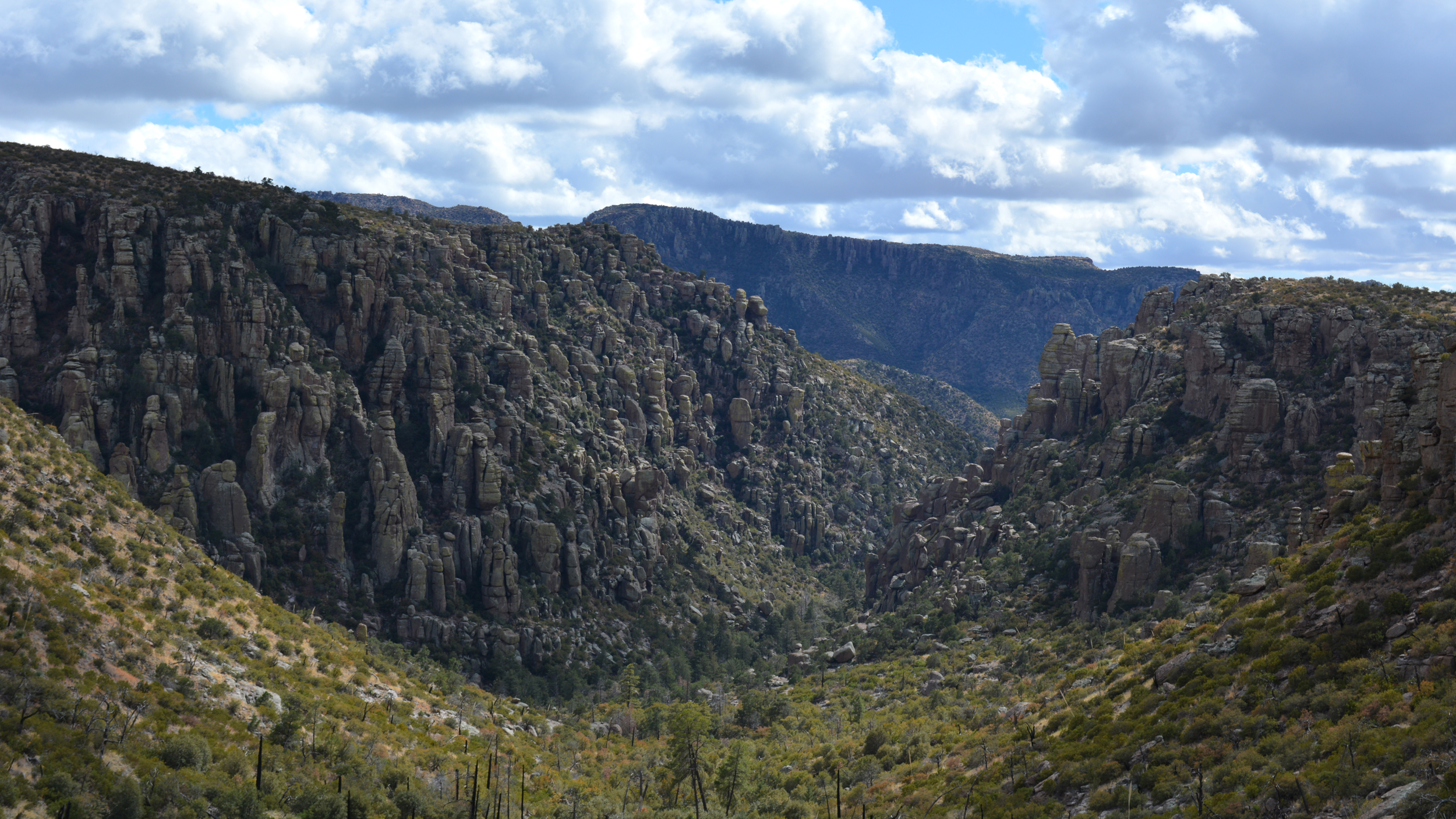

About This Story
Perhaps you noticed: This story, like all the news we publish, is free to read. That’s because Inside Climate News is a 501c3 nonprofit organization. We do not charge a subscription fee, lock our news behind a paywall, or clutter our website with ads. We make our news on climate and the environment freely available to you and anyone who wants it.
That’s not all. We also share our news for free with scores of other media organizations around the country. Many of them can’t afford to do environmental journalism of their own. We’ve built bureaus from coast to coast to report local stories, collaborate with local newsrooms and co-publish articles so that this vital work is shared as widely as possible.
Two of us launched ICN in 2007. Six years later we earned a Pulitzer Prize for National Reporting, and now we run the oldest and largest dedicated climate newsroom in the nation. We tell the story in all its complexity. We hold polluters accountable. We expose environmental injustice. We debunk misinformation. We scrutinize solutions and inspire action.
Donations from readers like you fund every aspect of what we do. If you don’t already, will you support our ongoing work, our reporting on the biggest crisis facing our planet, and help us reach even more readers in more places?
Please take a moment to make a tax-deductible donation. Every one of them makes a difference.
Thank you,





